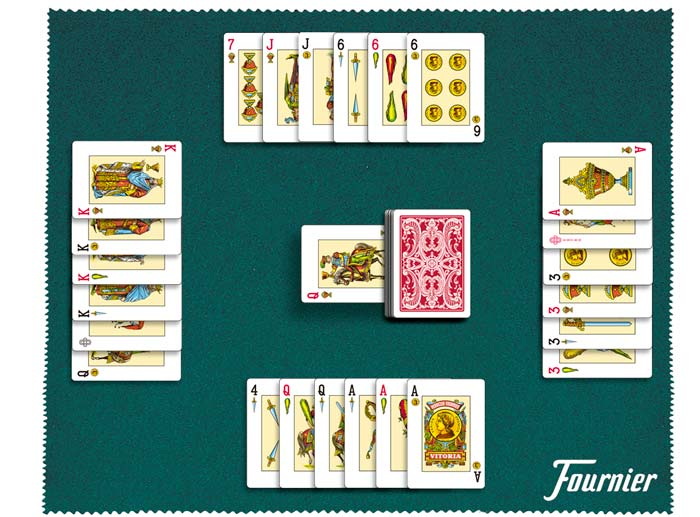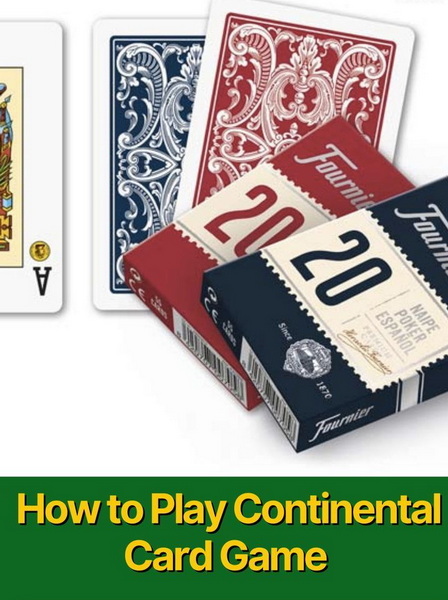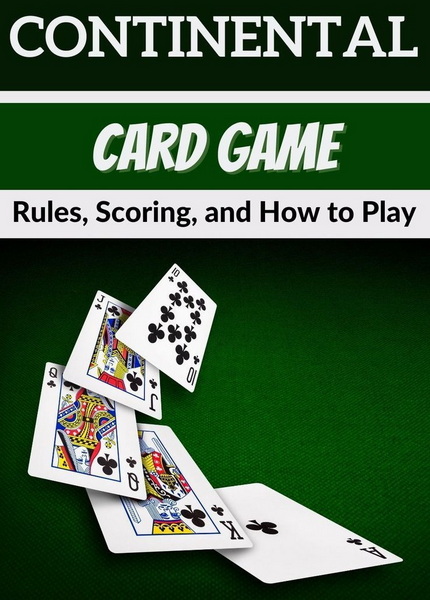Content Menu
● Game Overview
● Setup and Deck
● Card Values and Scoring
● Dealing
● Gameplay Basics
● Combinations
● Rounds and Required Combinations
● Wild Cards and Jokers
● Special Rules and Strategies
● Scoring and Winning
● Advanced Strategies
● Variations
● Etiquette and Fair Play
● Conclusion
● Related Questions and Answers
>> 1. What is the difference between Continental and traditional Rummy?
>> 2. How many jokers are used in a standard Continental game?
>> 3. Can Aces be used as both high and low cards in the same run?
>> 4. What happens if a player cannot make any valid moves on their turn?
>> 5. Is it always beneficial to lay down combinations as soon as they are formed?
● Citations:
Continental, also known as International Rummy, is a captivating card game that combines elements of strategy, skill, and luck. This game has gained popularity among card game enthusiasts due to its unique rules and engaging gameplay. In this comprehensive guide, we'll explore the intricacies of Continental, from its basic setup to advanced strategies, ensuring you have all the knowledge needed to enjoy this exciting game.

Game Overview
Continental is typically played with 2 to 8 players, using multiple decks of standard playing cards, including jokers. The game's objective is to form specific combinations of cards and be the first to lay them down, while accumulating the lowest number of points over several rounds.
Setup and Deck
The number of decks used in Continental depends on the number of players:
- For 2 to 4 players: Use 2 decks
- For 5 to 6 players: Use 3 decks
- For 7 to 8 players: Use 4 decks
Each deck includes 52 cards plus jokers. Some variations use 2 jokers per deck, while others use 3[7].
Card Values and Scoring
Understanding the point values of cards is crucial in Continental, as the goal is to minimize your score:
- Joker: 50 points
- Ace: 20 points
- Face cards (King, Queen, Jack): 10 points each
- Number cards (10 to 2): Face value
Dealing
To start the game:
1. Players draw cards to determine the dealer. The highest card becomes the dealer[5].
2. The dealer shuffles the cards and offers the deck to the player on their right to cut.
3. The dealer then distributes cards to each player, one at a time, in a clockwise direction.
4. The number of cards dealt depends on the round being played (more on this later).
5. The remaining cards form the draw pile, with the top card turned face-up to start the discard pile.
Gameplay Basics
The basic flow of the game is as follows:
1. Starting with the player to the dealer's left, each player takes a turn.
2. On their turn, a player must:
a. Draw a card (either from the draw pile or the top card of the discard pile)
b. Form and lay down required combinations (if possible)
c. Discard one card face-up onto the discard pile
3. Play continues clockwise until a player successfully lays down all required combinations and discards their last card, ending the round.

Combinations
In Continental, players must form specific combinations of cards. The two main types of combinations are:
1. Trios (or Sets): Three or more cards of the same rank, regardless of suit.
2. Runs (or Straights): Four or more cards of the same suit in sequential order.
It's important to note that in runs, Aces can be used as either high (after King) or low (before 2), but not both in the same run[8].
Rounds and Required Combinations
One of the unique aspects of Continental is that each round has specific combination requirements. The game typically consists of seven rounds, each with increasing difficulty:
1. Round 1 (TT): Two Trios (6 cards minimum)
2. Round 2 (TR): One Trio and One Run (7 cards minimum)
3. Round 3 (RR): Two Runs (8 cards minimum)
4. Round 4 (TTT): Three Trios (9 cards minimum)
5. Round 5 (TRT): Two Trios and One Run (11 cards minimum)
6. Round 6 (RTR): One Run and Two Trios (12 cards minimum)
7. Round 7 (RRR): Three Runs (13 cards minimum)[7]
The number of cards dealt increases with each round, always being one more than the minimum required for the combinations.
Wild Cards and Jokers
In Continental, Jokers and sometimes red Aces serve as wild cards. These can be used to substitute for any card in a combination. However, there are specific rules governing their use:
1. Jokers can be used in both trios and runs.
2. In a trio, there can be at most two wild cards.
3. In a run, wild cards can be placed anywhere, but they cannot be moved once placed, except under specific circumstances[7].
Special Rules and Strategies
1. Out-of-turn play: A unique feature of Continental is that players can pick up a discarded card out of turn. However, doing so incurs a penalty of drawing an additional card from the draw pile[3].
2. Laying down combinations: Players can lay down their combinations at any time during their turn, even if they don't have all the required combinations to end the round.
3. Closing the round: To end a round, a player must lay down all required combinations and discard their last card.
4. Penalty cards: When a player takes a discard out of turn, they must also take a penalty card. These extra cards can make it challenging to close the round and may result in higher scores[3].
Scoring and Winning
At the end of each round:
1. The player who successfully lays down all required combinations and discards their last card scores zero points for that round.
2. All other players score points based on the cards remaining in their hands, even if those cards form partial combinations.
3. The game continues for all seven rounds, with players aiming to accumulate the lowest total score.
4. After the seventh round, the player with the lowest total score wins the game.
Advanced Strategies
To excel at Continental, consider these advanced strategies:
1. Card counting: Keep track of discarded cards to better estimate the likelihood of drawing needed cards.
2. Strategic discarding: Avoid discarding cards that might help your opponents complete their combinations.
3. Timing your lay-downs: Sometimes it's advantageous to hold onto completed combinations until you can lay down all required sets at once, surprising your opponents.
4. Managing wild cards: While wild cards are valuable, be cautious about holding too many, as they carry high point values if you're caught with them at the end of a round.
5. Observing opponents: Pay attention to which cards your opponents are picking up and discarding to deduce their strategies.
Variations
Continental has several variations that can add excitement to the game:
1. Super Continental: This version adds five additional rounds with more complex combinations, such as four trios or four runs[7].
2. Different scoring systems: Some variations assign different point values to cards or offer bonus points for specific achievements.
3. Mandatory different suits: In some versions, runs in multi-run rounds must be of different suits, and trios in multi-trio rounds must be of different ranks[7].
4. No wild cards: For a more challenging game, some players prefer to play without jokers or wild cards.
Etiquette and Fair Play
As with any card game, good sportsmanship is essential in Continental:
1. Avoid table talk or giving hints about your hand to other players.
2. Make your discards clear and visible to all players.
3. If you make a mistake in laying down combinations, be prepared to take the cards back and incur any penalties as per house rules.
4. Respect the pace of the game and avoid unnecessary delays during your turn.
Conclusion
Continental is a fascinating card game that offers a perfect blend of strategy, skill, and luck. Its unique round structure and combination requirements make each game a new challenge. Whether you're a casual player looking for a fun pastime or a serious card game enthusiast seeking to master a complex game, Continental has something to offer. By understanding the rules, practicing regularly, and developing your strategic thinking, you can improve your gameplay and enjoy the thrill of this engaging card game.

Related Questions and Answers
1. What is the difference between Continental and traditional Rummy?
Continental differs from traditional Rummy in several ways:
- It uses multiple decks instead of just one.
- Each round has specific combination requirements.
- The number of cards dealt increases with each round.
- Players can pick up discards out of turn, with a penalty.
- Scoring is based on accumulating the lowest points over multiple rounds.
2. How many jokers are used in a standard Continental game?
In a standard Continental game, the number of jokers depends on the variation being played. Typically, there are either two or three jokers per deck. For example, in a two-deck game, you would have either four or six jokers in total.
3. Can Aces be used as both high and low cards in the same run?
No, Aces cannot be used as both high and low cards in the same run. While Aces can be played as either the highest card (after King) or the lowest card (before 2), they must be used consistently within a single run.
4. What happens if a player cannot make any valid moves on their turn?
If a player cannot make any valid moves, they must still draw a card (either from the draw pile or the discard pile) and then discard a card from their hand. They continue to participate in the round, hoping to improve their hand in subsequent turns.
5. Is it always beneficial to lay down combinations as soon as they are formed?
Not necessarily. While laying down combinations reduces the risk of being caught with high-value cards at the end of a round, it can also reveal your strategy to opponents. Sometimes, it's advantageous to hold onto completed combinations until you can lay down all required sets at once, potentially catching opponents off guard and ending the round quickly.
Citations:
[1] https://www.coololdgames.com/card-games/rummy/continental/
[2] https://www.tajrummy.com/blog/continental-rummy/
[3] https://torofun.com/en/continental/rules
[4] https://vocal.media/gamers/things-you-need-to-know-to-get-better-at-continental-rummy
[5] https://www.nhfournier.es/en/como-jugar/continental/
[6] https://math.stackexchange.com/questions/3791476/continental-card-game-probability
[7] https://www.continental.org.es/docs/rules.pdf
[8] https://en.wikipedia.org/wiki/Continental_Rummy
[9] https://www.getmega.com/rummy/learn/continental-rummy-or-international-rummy/
































